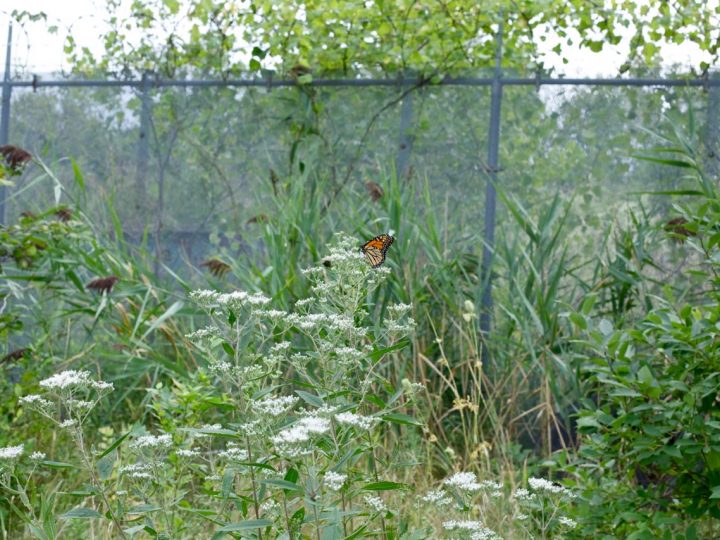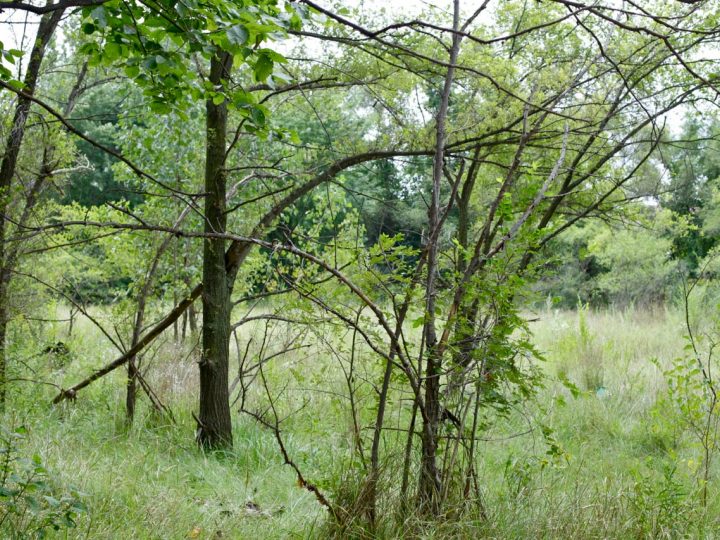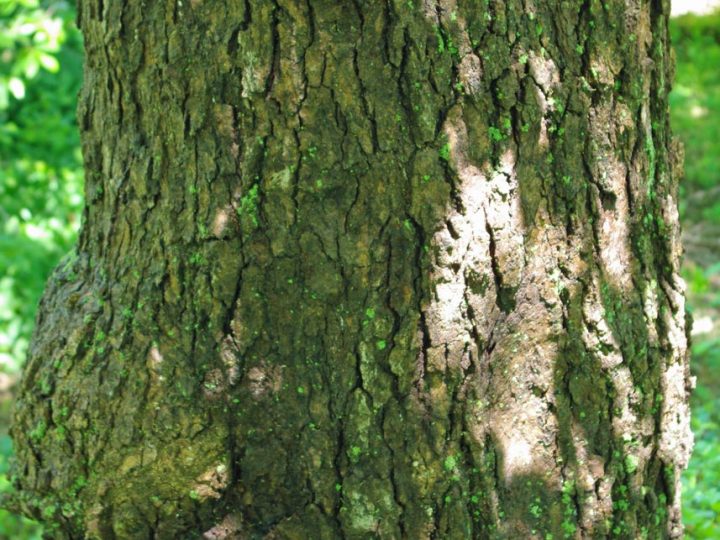
Forest Patcher
Create habitat and improve biodiversity with this set of guiding principles for managing an existing forest patch or emergent stand of trees.
Photo © Erin Kelly, Lambert, Rotherstien & Associates.
Cost
People
Upkeep
Experience
Stormwater
Sun/Shade
Is there an unruly woodland in your neighborhood? Or perhaps you’ve just acquired a lot that was fenced in for several years and now has a collection of small trees? This very low cost lot design is for residents with a long gaze. The Forest Patcher pairs an investment of time and volunteer labor with a set of maintenance strategies.
The Forest Patcher’s guiding principles will help you manage your existing woodland through the removal of dense understory growth and dying or diseased trees, as well as the addition of a few new trees or wildflowers. This management plan has the potential to bring habitat, biodiversity, shade, and a naturalized aesthetic to your neighborhood.
This is one of the lot designs in the Field Guide that emphasizes working with exactly what you have—curating your existing resources, rather than needing to acquire or add anything new to your lot per say.
Ideal Location: Any lot with existing trees in sun or shade.
Lot Type
Special Lot Condition
DFC 20 Year Land Use Area
Cost
This is a very low cost lot design. The price will vary depending on the extent of tree removal required, or conversely, the number of trees you wish to add. The Field Guide has anticipated the high value use of volunteer labor for this lot design. The cost assumes that volunteers have access to basic safety gear and garden tools.
Habitat Benefits
Other Benefits
Green Infrastructure
Trees provide multiple benefits to every neighborhood, including their ability to soak up water during storm events. With time, the benefits of planting a tree only increase. This lot design includes a mix of species to ensure resilience through diversity.
Vegetation and Visibility
The tree trunk spacing of this lot design will vary based on existing conditions. The recommendation is to create visibility when possible from the street to the alley, as well as to maintain a tidy edge.
Falling Hazard
The Forest Patcher includes managing existing trees as well as planting new trees. If you follow the design specifications, all new trees are located to ensure that basement root intrusion and potential falling hazards do not occur, and that the City’s plan review requirements are followed. Maintenance of our urban trees is of paramount importance to reduce any potential threat to residents, homes, vehicles and waterways in Detroit. Unmaintained trees create a hazard to neighboring structures. We recommend working with a certified arborist as your trees mature. Please note the trees on the plan are shown at a mature spread.
Lifespan
Planting Type
Most Interesting Season
Other Consideration

Photo © Lambert, Rotherstien & Associates

Photo © Lambert, Rotherstien & Associates
Build
You can install the Forest Patcher with the help of friends, family, or neighbors. The most strenuous activity will be clearing out existing scrub growth, removing any dead or dying tees, and transporting and planting any new trees into your forest patch. This lot design is an ongoing commitment to stewarding an existing forest patch. For this reason the Field Guide recommends working on this lot design as part of an organized group. Everyone tackles projects at different speeds—and a weekend cleanup event is a great way to kick off your build process while creating a visible impact. However, the forest management strategies collected in this lot design will be completed as time permits and through the seasons. This lot design requires ongoing participation and commitment, and may take years to “complete.” The Forest Patcher assumes that you are implementing with the help of unskilled volunteers. If you decide to remove large trees you will need to hire a professional or at least have someone on hand with experience in handling a chain saw. The Field Guide highly recommends speaking with a professional or an educational group as you select additional plant species for your woodland.
Build Time Estimate
Six hands or less! With the help of friends, family or neighbors, you can start this project in one weekend. The Field Guide assumes the lot is ‘construction ready,’ and all equipment and materials required for the lot design have been acquired and are ready to use.
Please note that the ‘build’ time on this lot design, which emphasizes maintenance strategies, is ongoing, and may require assistance once per season.
Build Difficulty
Number of People Needed
Neighbor Labor
Time Taken to Build
Build Season
Transportation Intensity
Permit Requirements
Upkeep
This lot design is best taken on with a group of volunteers, and can involve as much or as little maintenance as you desire—the level of attention you provide will directly influence how maintained your existing woodland appears to others. At minimum, maintaining a clean urban edge will require one cleanup per season. Removal of trees and scrub, if you do not hire a professional, can take significant physical labor—particularly the first time. If you plant trees, watering young trees during their first growing season, as well as during times of excess heat, will require some effort. As a woodland stewards, your will also need to inspect all trees (existing or recently planted) at least once a year to maintain a healthy forest. The Field Guide recommends connecting with an arborist or taking a workshop on tree health and maintenance. The Greening of Detroit offers a great Citizen Forester program to interested residents.
Seasonal Upkeep Levels
- Spring: Medium
- Summer: Medium
- Fall: Medium
- Winter: Medium



